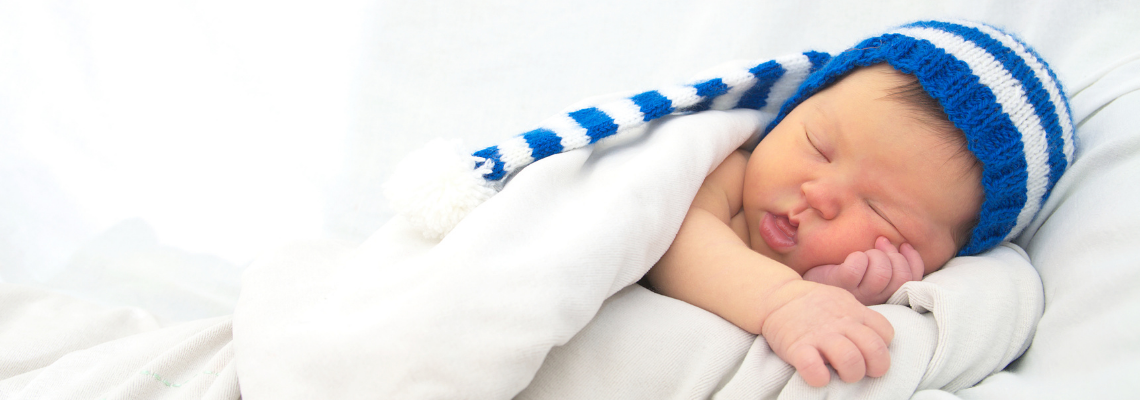
Neonatal jaundice is a common condition in infants and can be treated, although it may require inpatient admission of babies. Learn more about neonatal jaundice.
According to the CDC, jaundice is the yellow appearance of a baby’s skin that is noticeable early on during the first weeks of a baby’s life. Neonatal jaundice develops when the infant has excess bilirubin and is usually not severe early on in its development. Bilirubin is a yellow material that our bodies secrete during the manufacture of red blood cells. However, ignoring it allows it to advance to acute hyperbilirubinemia.
Causes of Neonatal Jaundice
During pregnancy, factors such as differences in mother-child blood groups, premature births or cases of previous infections in siblings cause high bilirubin levels. Infants whose blood group is incompatible with their mothers’ might produce antibodies that ruin their red blood cells, resulting in elevated bilirubin levels.
A baby’s bilirubin pattern is usually high after birth. During the gestation period, the baby excretes waste materials through the placenta. The placenta grows in the mother’s womb for feeding and removing waste materials from the body. Newborn babies no longer rely on the placenta for excretion but instead use the liver. Hence, it might take some time before the body adapts to this transition. Factors such as some drugs, diseases acquired at birth such as syphilis and liver ailments like hepatitis and cystic fibrosis inhibit the removal of bilirubin.
Physiological jaundice follows a pattern where the levels range between five and six milligrams per deciliter on the third day and subsequently subside in the first week. One variation is breastfeeding jaundice, which occurs early in an infant’s life. Breastfeeding the baby with low amounts of milk might bring about this condition. Breastfeeding jaundice can develop even later, although it is rare. This scenario is caused by a substance in the mother’s milk that hinders the liver from breaking down bilirubin.
Pathologic jaundice occurs almost immediately after birth and requires urgent medical care. Therefore, your baby will be treated if doctors detect an increase in your baby’s bilirubin quantities by more than five milligrams per deciliter. This condition is brought about by septic infections, German measles, toxoplasmosis, profound bleeding, sickle cell anemia and high numbers of red blood cells.
 Symptoms
Symptoms
The most evident sign of jaundice is the yellow appearance of an infant’s skin. The baby’s white part of the eyes also turns yellow. Under severe cases caused by too much bilirubin, you should seek medical help. Some of the signs prevalent in this state are the skin of your baby becoming intensively yellow, your baby’s arms, legs or abdomen appearing yellow, your baby seeming unenergetic, unwell or unable to keep awake, poor eating habits in your baby, your baby being unable to gain weight and crying loudly for elongated periods.
If bilirubin is left untreated, it may affect the brain, resulting in encephalopathy. Some of its signs include loss of energy, immobility, crying loudly, loss of appetite, body fever and tilting the neck and the body to the back.
How to Deal With It
Hyperbilirubinemia is mainly treated using phototherapy. Phototherapy involves the skin taking in light. The absorbed light acts on the bilirubin, breaking it down to a form that the liver can excrete into urine or stool. Alternatively, you can carry out an exchange transfusion. In this method, a narrow catheter tube draws your baby’s blood and replaces it with blood from a donor from a compatible blood group. This method is highly effective, and babies heal quickly.
Health experts recommend that mothers breastfeed babies on eight to twelve occasions daily to prevent physiological jaundice. Babies fed on formula should consume one to two ounces at two-hour intervals for the first seven days.
When to Seek Medical Help
Nurses and midwives will check your baby for any signs of jaundice within three days of being born during the newborn physical examination.
If your baby develops the signs mentioned in the above section, contact your midwife, pediatrician or clinician for diagnosis. Even though neonatal jaundice is not a cause for stress in most cases, you should assess whether the baby needs medical attention. If you are practicing home-based care, do not hesitate to contact your midwife if symptoms worsen.


